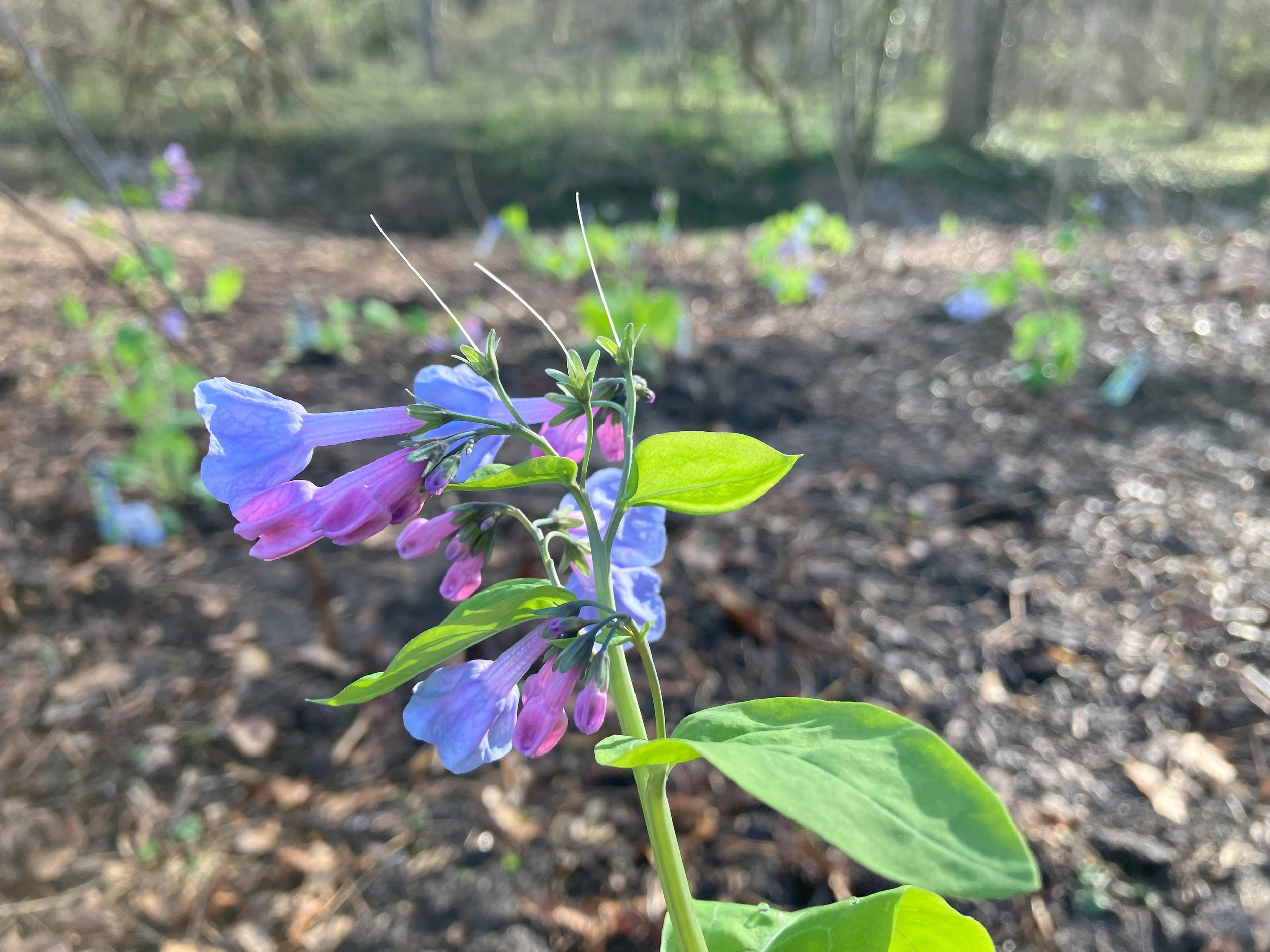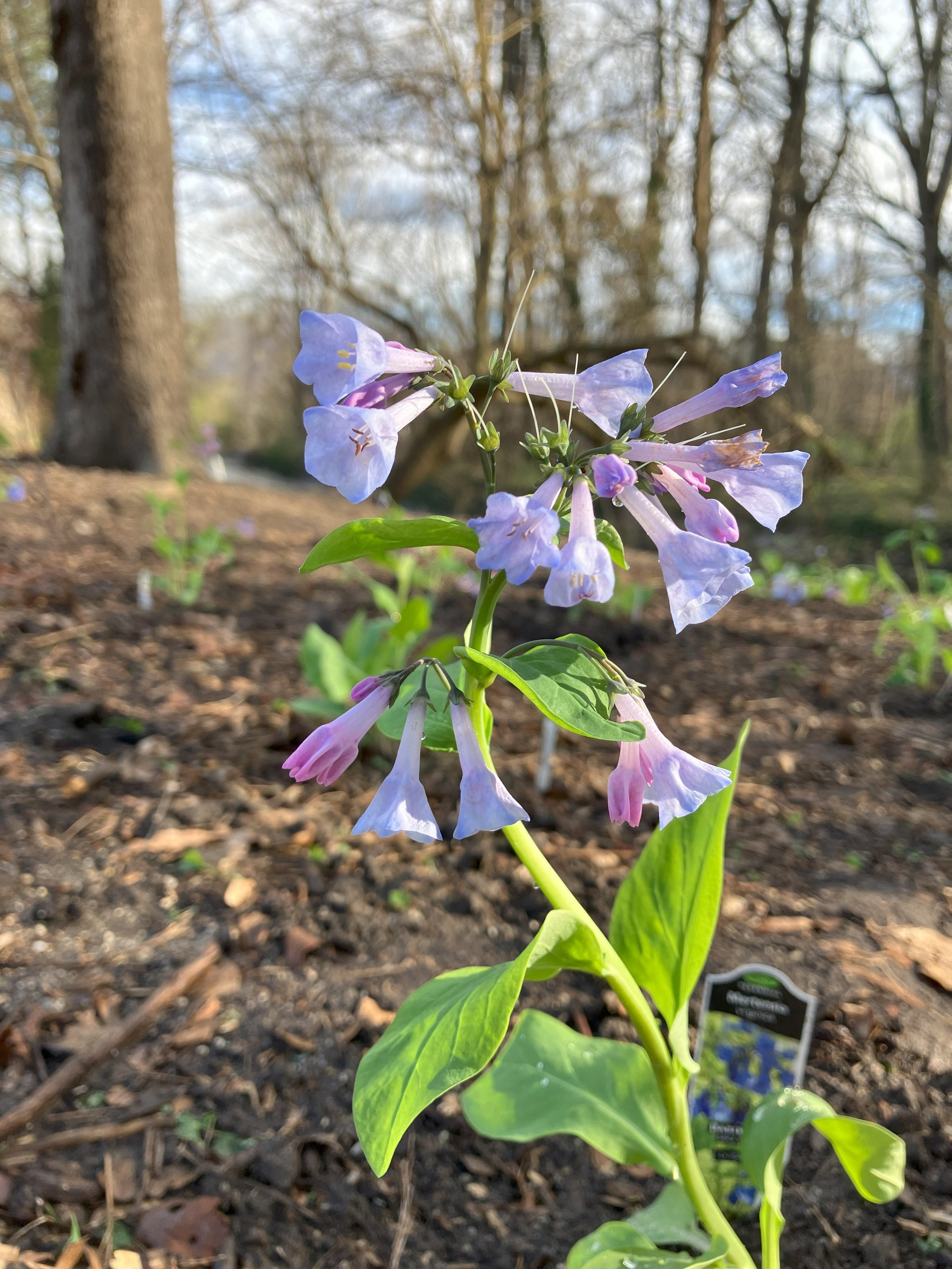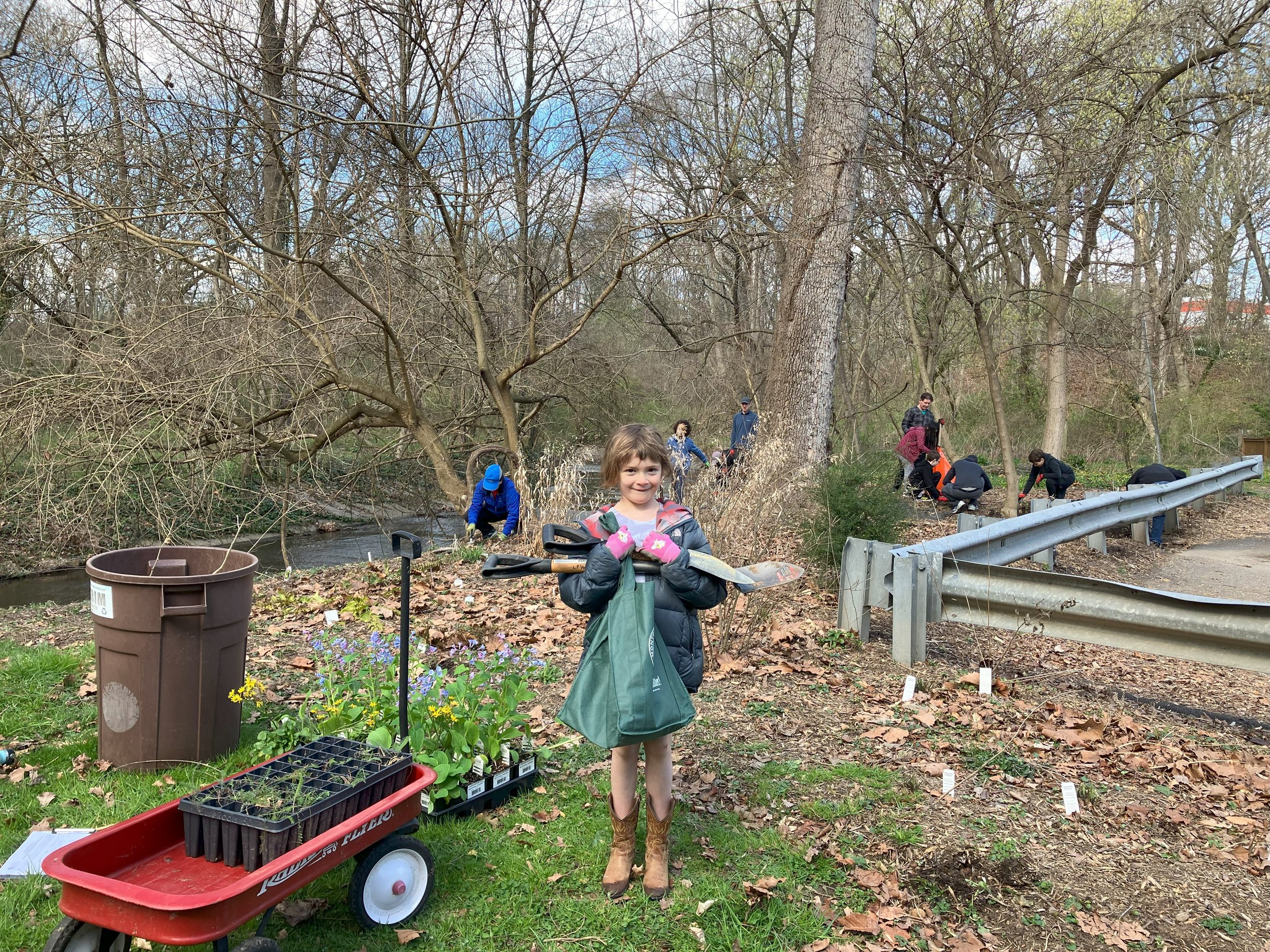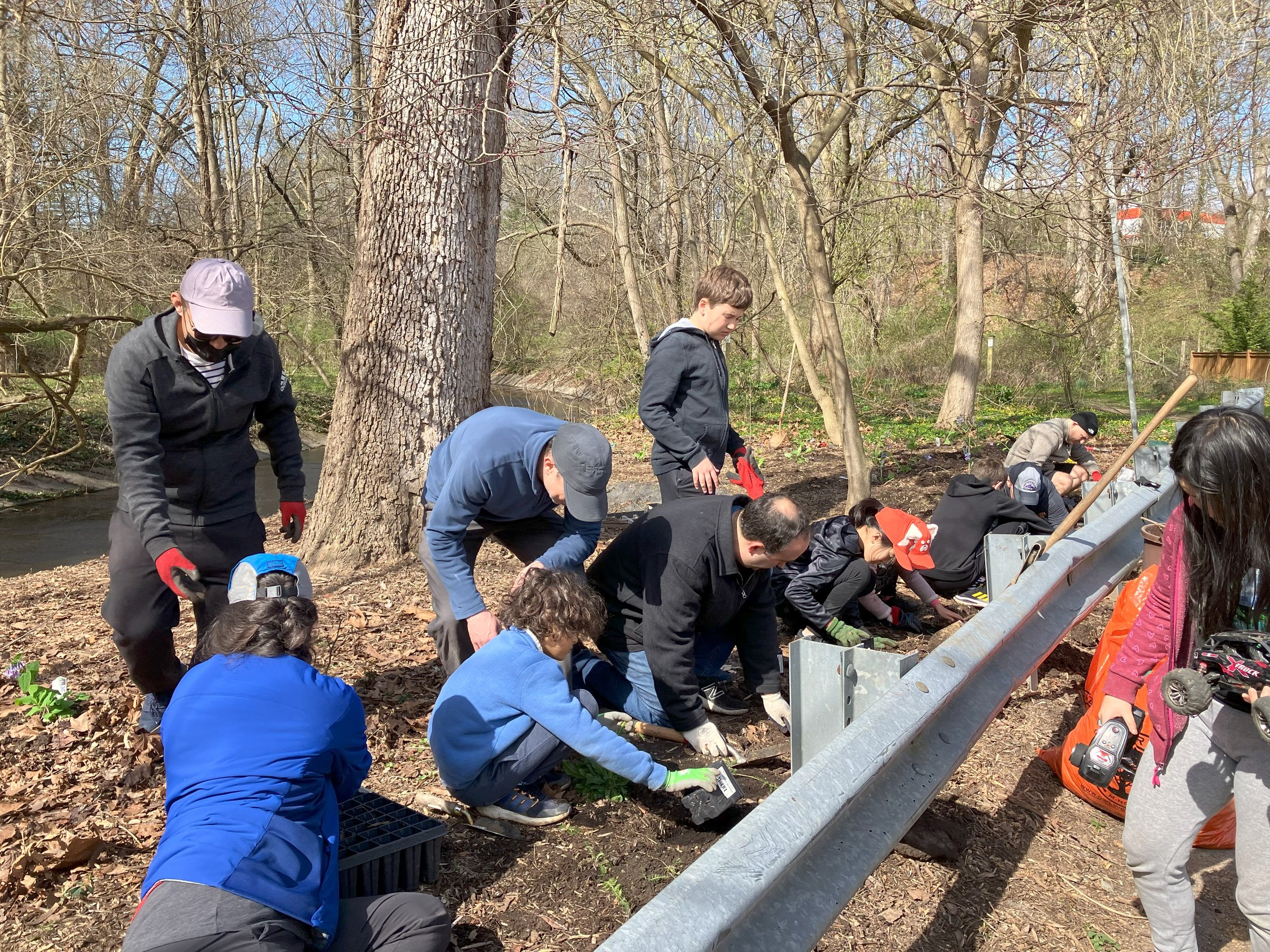It’s spring in the Green Acres Habitat Restoration Project in Bethesda, MD and we are happy to report that the Virginia Bluebells (Mertensia virginica) we planted last fall are up and starting to bloom and more were planted just yesterday. Virginia bluebells are native to the eastern part of North America and occur in riparian forests, which are wooded areas growing on river and lake banks or in wetland areas. The blue flowers in the spring make a stunning display and when they spread, carpet the area in blue.
The Little Falls Stream Valley Park used to be home to hundreds of bluebells, but they have been crowded out by non-native invasives which cover the forest floor all year long like English ivy or those like lesser celandine which emerge well before the bluebells are up. The effect on the environment is profound. As one of the first bloomers, they are important to bumblebees and other long-tongued bees as well as by several types of butterflies, skippers and hummingbird moths, flower flies (syrphids), and bee flies. These pollinators have evolved to eat native plants only and cannot survive without them. Just like the monarch butterfly needs milkweed to reproduce, every pollinator has a host plant. The host plants provide food for the hatching caterpillars. Without caterpillars to feed song bird nestlings, song birds populations suffer and so on up the food chain.
Plant Natives in Your Yard
Hummingbird Moth. Stock Photo Adobe
You can help bring native plants back to the Little Falls watershed by planting bluebells in your yard. You will be rewarded not only by their beautiful display in early spring, but also by the buzzing of pollinators. Maybe you’ll even spot a hummingbird moth! The bloom period is about three weeks from late March to mid-April in our area. The plant die back, so pair them with shade loving plants like fringe flower, solomon’s seal or ferns.
For tips on how to use them in your garden visit https://www.nutsfornatives.com/post/dc-maryland-and-virginia-native-plants-behold-the-bluebell
Photos from March, 17 2024 planting day.








